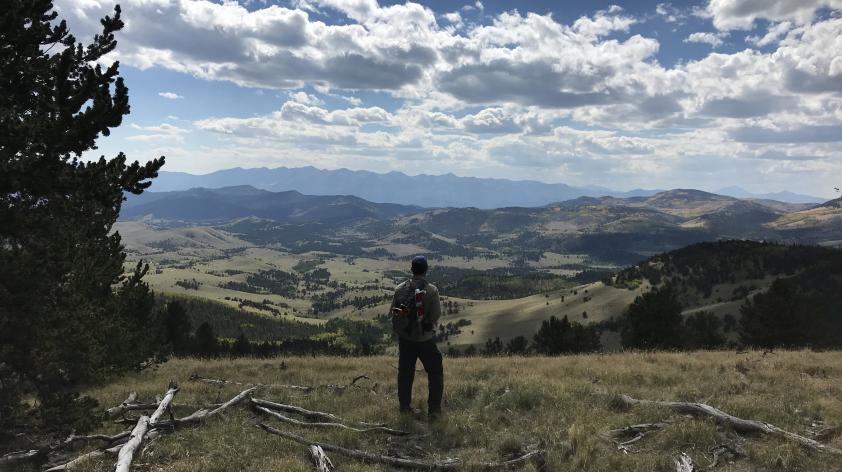
A Rookie in the Rockies
It is 5 o’clock in the evening and I’m getting dressed to start my work day. I pick up a tiny white mouse and pack it into my hiking bag. By 9 o’clock, my coworker and I have bushwhacked our way through two miles of rocky canyon filled with dense gambel oak, poison ivy, and fragrant evergreen trees. The sun has set, and we found a nice log to display our food offering (mouse) to our Mexican Spotted Owl friends.
I switch off my headlamp. Complete darkness. We turn our FoxPro megaphone to full blast and cover our ears as it broadcasts owl calls across the old growth forest to call in our owl friends. We sit quietly and hope that a Mexican Spotted Owl will come check us out, so that we can collect breeding and/or nesting information on them.
The Mexican Spotted Owl (MSO) is one of three threatened or sensitive species that the Bureau of Land Management (BLM) has been surveying in Colorado for conservation management purposes. The MSO population has struggled to thrive amidst human disturbances like habitat fragmentation and loss, so it is important for biologists to record and protect the areas that are still inhabited by owls.
With serious brain power, legs of steel, and bomb snacks, the wildlife team at Colorado’s Royal Gorge Field Office is gaining valuable information on MSOs, bats, and Canada lynx.
Bats feed on and ultimately curb pesky insect populations, while some even serve as plant pollinators. Over the past two decades, bat populations in the U.S. have been greatly affected by White Nose Syndrome (WNS), an infectious disease caused by a fungus that has already wiped out millions of bats on the east coast. The disease is gradually moving west, so the biology team and I scrambled up mountains, through rivers, and into canyons to install bat monitors across a third of the state of Colorado.
The monitors record bat acoustics, which are processed through software that match each acoustic reading to a species of bat. The data will tell us where these bats hang out, and give us a baseline population estimate of various bat species in Colorado. So, when WNS does hit Colorado, biologists can quantify the damage that is done by analyzing the data we collected this summer.
Poop scavenger hunts have been a big part of my summer as well, and for good reason. My coworkers and I get down and dusty in the Rocky Mountains looking for snowshoe hare pellets to estimate hare population density, which serves as a fantastic indicator of viable Canada lynx habitat. Canada lynx were extirpated from Colorado in the 1970’s, but were successfully reintroduced in 1999. An estimated 150-200 individuals currently roam the high country, according to Colorado Parks and Wildlife.
Since Canada lynx feed primarily on snowshoe hares, learning what makes a good home for a hare helps biologists pinpoint ideal lynx habitat in the Rockies. The biology team and I have been counting poops to estimate snowshoe hare density and collecting vegetation data to understand whether or not specific mountain regions can realistically support Canada lynx.
Four months of traversing Colorado’s diverse landscapes has made me a lot less clumsy and a lot more passionate for protecting the incredible species that call this place home. A special thank you to the biology team at BLM’s Royal Gorge Field Office for putting up with my lame jokes and reframing my perspective on threatened and endangered species management for the better.













